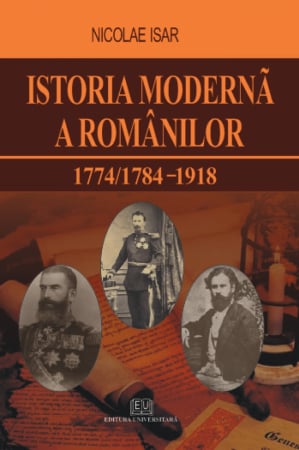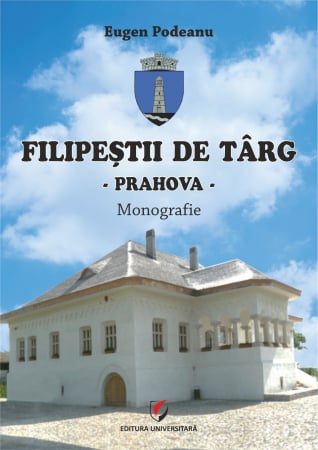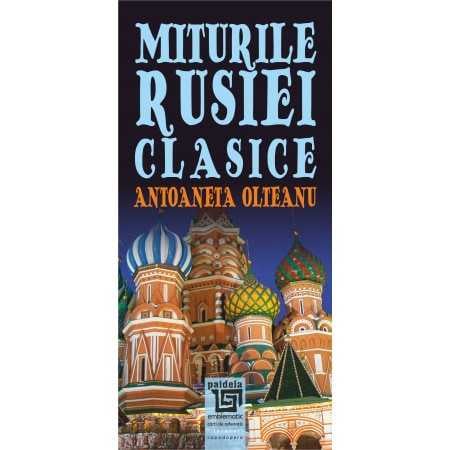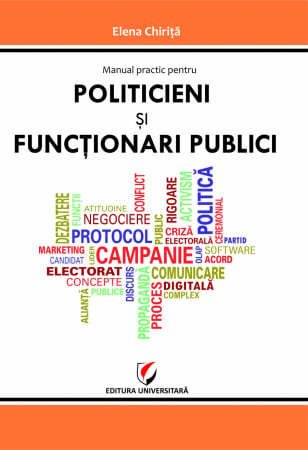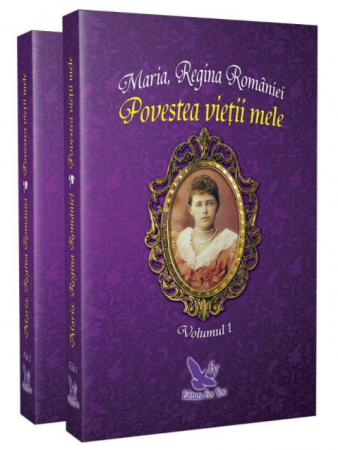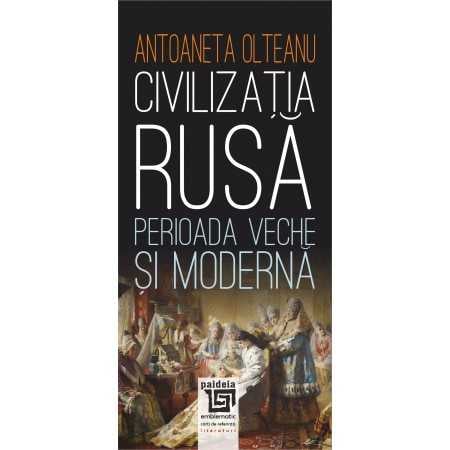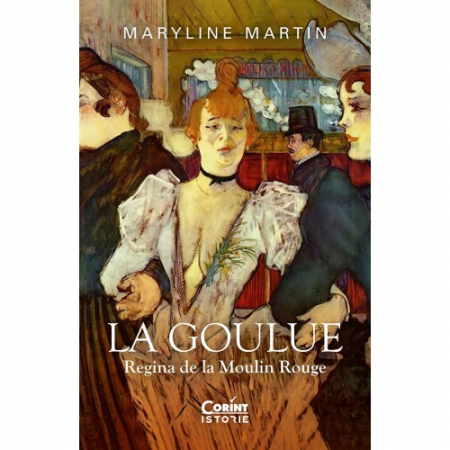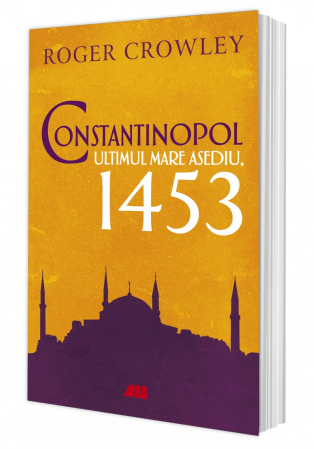ISBN: 978-606-28-0377-3
DOI: 10.5682/9786062803773
Publisher year: 2015
Edition: I
Pages: 384
Publisher: Editura Universitară
Author: Mihaela Ivanescu
- Description
- Download (1)
- Authors
- Content
- More details
- Reviews (0)
Mihaela Ivanescu's book can be described as an argumentative, rigorous and convincing answer given to a central question for understanding the democratic political process in post-communist Romania: how do national and local politics articulate each other in different types of elections? To answer this question, the author analyzes the electoral behaviors of individuals, but also the regularities in the formation of voting intention, as well as the influences that different types of variables have in creating or modifying the political preferences of citizens. Ms. Ivanescu mobilized not only the empirical data provided by the literature, but proceeded to develop their own working tools (questionnaires applied) to clarify irregularities in the distribution of votes between parties and candidates highlighted nationally, at the city level, but and of Constanta county, from the dense electoral moment 2008-2009.
Throughout the chapters of the book, the author lays and lays the theoretical and methodological bases for a more detailed and pertinent exploration of the two issues that she placed at the center of her issue: on the one hand, the political disengagement of citizens manifested by electoral absenteeism, and on the other hand, the incongruity between national and local politics at the level of voting options. In the nine rounds of general, presidential and local elections organized in post-communist Romania (seven of them investigated in detail in the paper), the vote is gradually marked by three intertwined phenomena that need explanation: the accentuated electoral decommissioning of citizens, the volatility of preferences expressed from one election to another and the relative disarticulation between the options formulated simultaneously for the local elected and for the national ones, the latter feature being mainly manifest in the sometimes dramatic divergence between the local and the presidential vote.
Hence the assumed methodological pluralism of the book: voting volatility and partisan precariousness are both factors that make it impossible to naturalize in the Romanian context one of the classic explanatory models in political science of the formation and distribution of electoral preferences. All these models, carefully reviewed, inevitably introduce in the recipe for the analysis of the empirical material a form of rationality that does not seem able to capture satisfactorily the variety of criteria used by the Romanian voter.
The central hypothesis of the book - gradually transformed into a tested and confirmed thesis - is therefore that the individual voter uses at the same time and without being concerned with any command of coherence to a variable number of cries, which take into account partisan identification, but it constantly contrasts with the preference for the candidate's personality, but also with a certain ability to rank his options for specific candidates. Such a thesis may seem simultaneously predictable and vague, but it is illustrated with analytical force by the electoral behavior of citizens, willing to experience at least partially locally the choice of a candidate as a form of sympathy for his party, while such a favor is lost when the same voter formulates his decision regarding the personality and the national party. In this complicated game of mirrors that Mihaela Ivanescu tries to capture and measure, the reflection that the favorite candidate leaves on the party and the way the party potentiates the preference for a candidate are not only asymmetrical, but straightforward. incongruous. This seems to me to be, undoubtedly, the major contribution of the book to the finer understanding of the way in which the Romanian political logic of the present time was structured from the bottom up.
The analysis ultimately captures what could be called the process of "de-nationalization" of Romanian politics, which began slowly in 2001 and ended in 2008. In other words, local politics is the key to understanding how the political regime works. Romanian. Elections, parties, clientelism and bureaucracy are the four dimensions that organize reflection. The Romanian state is only a practice of the parties. They, in turn, are inseparable from the local administrative apparatus they use to consolidate, to recruit and reward members, to organize elections and to manufacture election results.
Divided voting and re-election are not necessarily control tools available to the voter. On the contrary, especially since 2008, the vote (especially the local one and only partially the national one) is almost entirely controlled by the party apparatuses able to extract it from the society. Unpredictability, as long as it exists, depends more on the ability, variable from one party to another, to form, maintain and develop networks of patronage and clientelism that produce votes. The parties exist and function in this local horizon, especially as devices for mobilization, for making even votes. And the method by which the parties carry out this seasonal operation is clientelism. The latter, on the other hand, is organized in relatively stable and, in any case, sustainable patronage networks, which manifests itself as the only local form of political life. The Romanian parties, caught at work between the state apparatuses and the society, do not have the role to represent and socialize the citizens, but to mobilize them at the polls.
They manage to do it, Mihaela Ivanescu demonstrates by reflecting on the electoral picture of Constanta in 2008 and 2009, according to a logic of asymmetric bi-personalism. In local elections, the personality of the local leader is decisive in the accumulation of votes on behalf of a particular party. Instead, the presidential election can overturn the hierarchy of votes by the opposite force of the national personality, which always seems to have the ascendancy over the local one. Is this about voter discernment? Rather, we would be dealing with two disconnected electoral situations (even when they were simultaneous, as happened until 2004), with two horizons of expectations quite distinct in the collective imagination and in its repercussions in the press. On the one hand, the horizon of real life, where the better or the different are always the enemy of the good you have become accustomed to and whose limits you know. On the other hand, the generic, fictitious and distant horizon embodied by the President of Romania. The latter is a horizon unrelated to the direct experience of citizens. Therefore, they can project at this level in complete freedom, as on a white screen, all illusions, hopes, resentments and frustrations. No obvious, concrete and immediate risks.
The revelation of this divisible, even divergent, character of the electoral choice of the citizens, often presented as an indivisible political good, probably represents the main intellectual contribution of the book to the Romanian political science. In democracies, voting is, of course, a right. But it can also be an illusion of individual freedom, Mihaela Ivanescu suggests with refinement.
Professor Daniel Barbu
-
ALEGERI SI COMPORTAMENTE ELECTORALE IN ROMANIA: DE LA LOCAL LA NATIONAL
Download
List of tables / 9
List of figures / 14
PREFACE / 15
INTRODUCTION / 19
Preliminary observations / 19
Working hypotheses / 23
Methodology used / 26
Structure of the paper / 29
Thanks / 33
I. EXPLANATORY MODELS OF ELECTORAL BEHAVIORS / 35
I.1. Introductory elements / 35
I.1.1. Political behavior: research directions / 36
I.1.2. Formation of political preferences: some explanatory models / 44
I.2. Ecological model / 51
I.3. Models of economic origin / 53
I.3.1. Downs model (spatial proximity voting model) / 55
I.3.2. Directional voting model / 63
I.3.3. Retrospective voting model / 68
I.3.4. Consumer voter model (Himmelweit model) / 71
I.4. Psychological models of voting / 73
I.4.1. Michigan model (of partisan identification) / 74
I.4.2. Cognitive models of voting / 79
I.4.3. Psychodynamic models of voting / 8
1 I.5. Sociological models of voting / 83
I.5.1. Columbia model for explaining the vote / 85
I.5.2. The radical model of voting / 88
I.6. Combined model (Merrill - Grofman model) / 9
II. BRIEF HISTORY OF THE ELECTORAL SYSTEM IN ROMANIA / 93
II.1. Introductory elements / 93
II.2. The Romanian electoral system between 1866 and 1989 / 95
II.3. The Romanian electoral system after 1989 / 104
II.3.1. Romanian electoral legislation in the period 1990 - 2004 / 104
II.3.2. Major changes in the Romanian electoral legislation - the electoral law from 2008 / 111
III. ELECTIONS AND ELECTORAL BEHAVIOR IN ROMANIA AND IN CONSTANTA: A COMPARATIVE APPROACH (1990-2004) / 119
III.1. Preliminary considerations / 119
III.2. Constanta at the end of 1989 and the beginning of 1990 / 123
III.3. The elections in Romania in 1990 / 125
III.3.1. Parliamentary and presidential elections / 125
III.3.2. The 1990 elections in Constanta / 129
III.4. The elections in Romania in 1992 / 131
III.4.1. The parliamentary and presidential elections of 1992 / 131
III.4.2. The 1992 elections in Constanta / 136
III.5. The elections in Romania in 1996 / 144
III.5.1. The parliamentary and presidential elections of 1996 / 144
III.5.2. The 1996 elections in Constanta / 148
III.6. The elections in Romania in the year 2000 / 155
III.6.1. Parliamentary and presidential elections in 2000 / 155
III.6.2. The elections of the year 2000 in Constanta / 159
III.7. The elections in Romania in 2004 / 165
III.7.1. The parliamentary and presidential elections of 2004 / 165
III.7.2. The 2004 elections in Constanta / 168
IV. 2008-2009 ELECTIONS: RESULTS AT NATIONAL LEVEL AND THE CASE OF CONSTANTA: COMPARATIVE APPROACH / 177
IV.1. General considerations / 177
IV.2. Local and parliamentary elections in 2008 in Constanta / 180
IV.3. Presidential elections in Romania in 2009 / 188
IV.3.1. Results at national level / 188
IV.3.2. Presidential elections 2009 - the case of Constanta / 190
V. DYNAMICS OF VOTING PARTICIPATION IN ROMANIA / 197
V.1. General considerations / 197
V.2. Political participation: research directions / 199
V.3. Electoral absenteeism in Romania / 207
V.4. Dynamics of voting participation in Constanta / 216
VI. THE MODEL OF VOTING BEHAVIOR IN CONSTANTA / 223
VI.1. Some conceptual clarifications / 223
VI.2. Towards a theoretical model applied to the case of Constanta / 232
VI.3. Methodological springs of research: investigating individual electoral behavior based on structured interview / 239
VI.4. Analysis of the electoral behavior of the panel members / 256
CONCLUSIONS / 279
General remarks / 279
Research hypotheses - confirmations and refutations / 284
Instead of an epilogue - the local and parliamentary elections of 2012 in Constanta / 286
Possible new avenues of research / 291
ANNEXES / 295
ABSTRACT / 333
ABSTRACT / 351
BIBLIOGRAPHY / 371
The topic proposed in this paper is quite little researched in political science in our country, namely the analysis of electoral behaviors of individuals, but also the formation of voting preferences and the influences that different types of variables have in creating or changing citizens' political preferences. We aimed to analyze how the political choices of the electorate for the different types of elections are constructed, as well as the effects that the results of the local elections have on the way citizens report to the parliamentary or presidential elections and on their electoral preferences. We referred in our analysis to a smaller area, Constanta County, with the confidence that the results obtained may be the starting point for other similar research in other geographical areas of the country.
We chose Constanta County on the one hand because there is no, at national level, in-depth studies on this area and, on the other hand, because, at a surface analysis on the results of local and parliamentary elections in 2008, Presidential elections in 2009, we were able to observe a number of interesting elements that have boosted our interest in such research. At national level, a series of researches have been carried out on the electoral behavior, either within complex projects developed by some research institutes, or by teams of professors within some research programs, but on other geographical areas, such as Transylvania. or Banat, the Dobrogea area not being included, until now, in such studies. In this sense, one of the methods used in this paper was the comparative analysis of the elections held in Constanta County since 1990 and until now with the results at national level, in order to highlight the particularities of this area.
The applicative value and the theoretical significance of the present paper will derive from the analyzes, syntheses and comparisons made during the investigations. Therefore, we believe that such a scientific approach is one of major importance, because the information gathered in this paper could be useful on several levels. First, specialists could use them in trying to find viable solutions to improve the functioning of democracy and to strengthen the party system, especially at the local level. Secondly, the political actors directly involved in the struggle for power would review the way they report to the voters, which would contribute to the increase of their political responsibility, but also of the degree of involvement of the citizens in public affairs. Third, ordinary individuals could better understand electoral mechanisms, the effects of different types of electoral systems, and take into account several variables in the process of electing representatives. Last but not least, the information in question could be a good working tool for students and / or researchers interested in this part of political science.
Our literature in the country is relatively poor in terms of studies on electoral behavior in the post-communist period, and the reasons, as some authors argue, are diverse: economic, political and social transformations since the early '90s, extreme multipartyism, party fragmentation, economic, political and social volatility. Various researchers, most of them American or British, have analyzed the electoral behavior in states with stable democracies, by taking into account ideological and performance indicators, but in Romania, most of the authors who were concerned about the issue of voting in the post-communist period placed more emphasis on the evolution of electoral legislation, or on the analysis of election results, dealing only tangentially with the more in-depth study of electoral behaviors.
As for the Romanian perspectives on the electoral processes, Cristian Preda is one of the authors concerned with this issue. His works mainly deal with the evolution of Romanian parties after 1990, the Romanian political system from the interwar and post-communist period, as well as the elections held in Romania between 1990 and 2008. In his works, the Romanian political scientist highlights the problem of legislative instability that characterized Romania after 1990. , a phenomenon that affected both the Romanian party system and the election results, in the sense that, although between 1990 and 2004 Romania had an electoral system of proportional representation, its effects in transforming votes into parliamentary mandates were deeply majority. Daniel Barbu also addresses this issue, in one of his works the Romanian political scientist even arguing, based on a simulation starting from the election data held in 1996, that the majority effect of the Romanian electoral system is visible and that the election results would not have been much different if they had taken place on the basis of a majority vote. Among the topics approached by the Romanian political scientist and which are of interest for our work are the evolution of the Romanian political system, both after 1990, but also in the period preceding the installation of democracy in Romania, or the analysis of the Romanian party system. On the latter issue, Daniel Barbu proposed, in a 2003 study, the term partitocracy to define the "absolute monopoly" held by political parties over "government personnel, resources and policy." He is of the opinion that, in Romania, the partitocracy relied on an "electoral legitimacy of a proportional nature", having as an effect a colonization of the economic society (autonomous governments, property funds, banks, state industries) by the party or coalition. in question, being, therefore, the systematic and continuous transfer of political decisions in non-political spheres”.
In an attempt to analyze voting behavior in the 1990 and 1992 elections, sociologist Alfred Bulai addressed the issue of turnout, which he did not consider a sign of the maturity of the Romanian electorate and discussed the reactive vote, highlighted in the case of voters. who were not so interested in the political struggle and opted for new parties rather than historical parties. He is of the opinion that this vote was a normal one, especially if we talk about the 1992 election campaign, which he also considers a reactive one, based mainly on the attack against those in power and the promises to achieve things that Romanians "They were pretty sure they already had them" (so-called "real democracy").
There is, at national level, a series of researches on electoral behavior carried out either within complex projects developed by some research institutes or by teams of professors within research programs, which focused mainly on the effects election campaigns on individuals. Among the researchers who have dealt with such topics are Mircea Comsa and Traian Rotariu, Andrei Gheorghita, Ioan Dragan, Gheorghe Teodorescu, etc. Also, in recent years, several researchers have conducted such analyzes, but focused on geographical areas such as Transylvania or Banat. The Dobrogea area and especially that of Constanta county did not, however, make the subject of such researches, that is why we considered that such an approach will be a useful one for a better understanding of the particularities of this space.
Analyzes about the relationship between voting and the various variables considered by the representatives of the main schools of thought have sometimes generated - as we will see in the first chapter of this paper - contradictory conclusions. Of course, the differences between these approaches must be taken into account in terms of how the research is designed, the available data, the hypotheses formulated and the ways of testing them, but the central element, which - from our point of view - must never be ignored, is that the reality is extremely complex, it can change very easily, and the contextual variables are numerous. Therefore, we considered that we will not be able to refer, in this paper, to a single explanatory model of electoral behaviors and that the one that would best serve us for testing the hypotheses would be a combined model, similar to the one proposed by Samuel Merrill III and Bernard Grofman (presented in more detail in the first chapter of the paper).

6359.png)
![Elections and Electoral Behavior in Romania: From Local to National [1] Elections and Electoral Behavior in Romania: From Local to National [1]](https://gomagcdn.ro/domains/editurauniversitara.ro/files/product/large/alegeri-si-comportamente-electorale-in-romania-de-la-local-la-national-672-88146.jpg)
